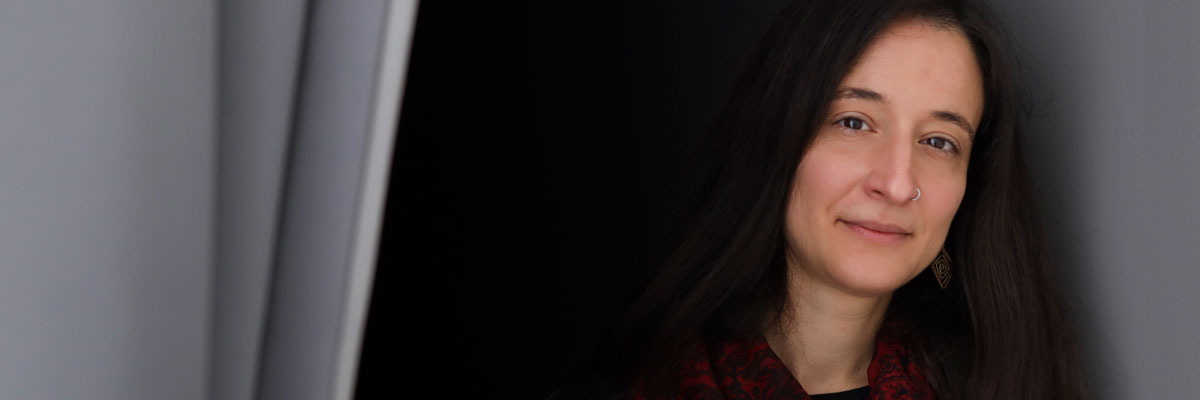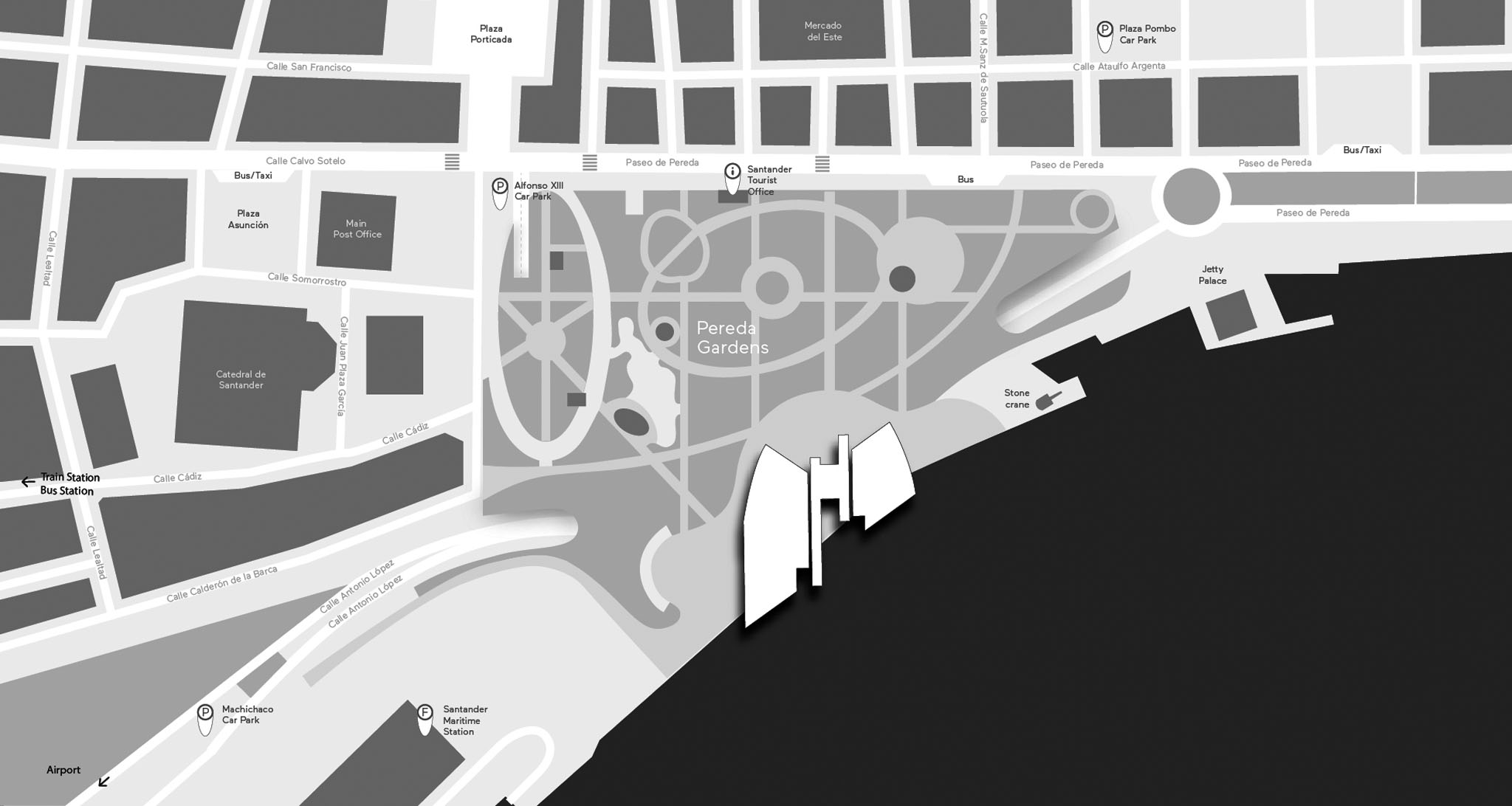
Seila Fernández Arconada
SAN FELICES DE BUELNA, CANTABRIA, SPAIN, 1986
Estudio Flotante, cuando el río suena a Amazonas (2019–2022) is an artistic project inspired by the relationship between human beings and water, in the most important freshwater reserve on the planet: the Amazon River. This project suggests a ‘collective artistic expedition’ as artistic method framed within the itinerary of the river’s course, from its origin in Nevado Mismi (Peru) until it reaches the ocean at Belém do Pará (Brazil).
Starting with an expedition to the source of the river, Estudio Flotante continues as a route in cargo and passenger boats ‘cargueros’ as shared spaces suspended in the river’s flow, its times and experiences as well as collective encounters in territories near the river banks: meetings or stays with individuals and groups, like scientific research centres, universities and artistic and community centres. Therefore, these boats become floating studios, places of interaction and creation based on the extended time where the goal is to research about the river whilst being on the river.
This search to ‘be more river-like’ reflects on narratives and plural forms of understanding relations between bodies of water, their tensions and their connections. With their fluidity, rivers are bodies that not only carry ancestral stories, memory and knowledge but also contain emotions and epistemic and ontological symbolism . They are a common good. However, these water sources, and even more so the Amazon River, are in constant tension, impacted by a global, colonial and patriarchal system which makes them a victim of their own life potential.
Its name: Amazon. In Spanish, the female name of the Greek myth was given as a result of its colonial discovery and represents one of the epistemic impositions on its biodiverse essence in the name of progress and development. Fictional narratives that sustain hegemonic imaginaries, silencing voices and forms located in territories where plural rivers are experienced, which remain today through the broad flow of History.
This project addresses the process as a means of eco-social investigation based on exchange, a dialogue of different kinds of knowledge to work with the territory in order to look for transversal questions and emergent relations arising from this diversity of encounters and artistic languages. From the local to the global, they are nurtured from exchanges that go beyond what may be represented in the exhibition space, some of them are tangible, others intangible, meanwhile there are some made visible, others remain invisible in the places where they took place.
Estudio Flotante blog serves as an artist’s book, a logbook of the journey. Each blog entry is a chapter in this project, an important part that reflects and shares the pathway of the process, not only conceptually but also experientially.
The materiality of this project is approached from a variety of techniques; however, sound is a very important element in this project. In this case, the soundwaves travel, inhabit and go across bodies of water, each human body that (co) habitates alongside the creations presented in the exhibition space:
Gota a gota el agua se agota (Drop by drop water is drained) is a sound creation situated in the course of the journey in the Peruvian Amazon. This composition includes documentation and sound exploration based on different collective experiences, including workshops with youth, ‘concerts to be more river-like’ and other experiences along the way. The artist has used hydrophones and other recording strategies to collect sounds. This work presents a sound experience to ‘be more river-like’, portraying the movement through the corporal based on the experience in the Amazon River.
Amazonas, entre realidad y ficción (Amazon, Between Reality and Fiction) is a reflection situated in the context of return and the final presentation (Spain). Due to the interruption of the route by the pandemic in 2020, the project was redirected while seeking to close a narrative cycle that would be meaningful for the investigation and its ethical principles. Therefore, this sound creation uses a Western musical genre: opera as an approach for reflection. This ‘fictionalised reality’ give voice to some other silence histories bringing important questions to Europe from a reality in real emergency.
The choice of the opera La Gioconda, with music by Amilcare Ponchielli and libretto in Italian by Arrigo Boito reached this investigation because it was the opera that opened the Teatro Amazonas in Manaus in Brazil’s Amazonia on 7 January 1897 in the midst of rubber fever. The Teatro Amazonas is and represents a colonial imposition which is tangible in Amazonia even today, hence the importance of using this musical piece.
The extract chosen for this work reproduces the opera’s original score. However, the lyrics were rewritten by the artist. These intensely profound lyrics connect the context of their original creation to today, winding down the Amazon River, the guardian of its shores, the witness of what happened then and what happens now, becoming memory while containing ancestral stories of life and death. The writing process has many points of collaboration along the way. It comes from the Amazon River and in its first presentation leads in the Guadalquivir River, accompanied by people from the Amazonia who collectively did a ritual of ‘payment to water’ to continue to weave relations between bodies of water.
This project has numerous ramifications, in addition to local interventions, among them:
Diálogo ritual artístico-colaborativo en el origen (Ritual Artistic-collaborative Dialogue at the Origin) (February 2020), made in conjunction with the artists Christopher Aquino and Alejandra Ortiz de Zeballos during the expedition to the source of the Amazon River in Nevado Mismi (Peru). This action included within the artistic expedition seeks to reflect and question the historical dispute in relation to the discovery and classification of the origin of the river.
La Ccocha Fiesta (February 2020) is an audiovisual work made by children in Coporaque (Peru). This story reflects the ritual-tribute to the water source near the origin of the Amazon which the community celebrates every year, an example of care that is presented in the collective creation with mixed media like documentary and animation. This film sought to connect them with the children from the source of the river by an act of audiovisual exchange which will be done in the future.
Estudio Flotante, cuando el río suena. Desde el río Amazonas al Guadalquivir (Floating Studio, When the River Sounds. From the Amazon to the Guadalquivir) (July 2021) is an encounter and a ritual-action, an embodied dialogue in the former Puerto de Indias (Seville), the launching point of numerous colonial expeditions via the Guadalquivir River, including the ‘discovery of the Amazon River’ expedition led by Francisco de Orellana. This action took place in a tour through the city while carrying a sculpture-chair on the back. This chair is a replica used by the ‘cargueros’, usually indigenous persons, who carried people from the West on their backs. This sculpturechair contains a wooden carving of the Amazon basin in back. It is an act that makes visible re-encounters and shows solidary and empathy, a seed of reparation and justice of History.
People from Amazonia living in Seville were invited to this two-day collective gathering. They are people who left their lives in the rainforest behind and took the inverse route of those who initiated that transatlantic contact. This encounter aimed to intertwine memory and territory through the reflections and creations generated in the Amazon River.
The performance Ser más río, relación y acompañamiento (Being More River-like:relations and companionship) (February 2020–July 2021) originated in the source of the Amazon River and sought to generate close contact between bodies of water. Drinking water from the source of the river to ‘be more river-like’ meant drinking a limited amount of this water, not as a sample but as a travelling companion that would be returned at its mouth. Due to the changes in the course of the project, the Guadalquivir River was the receiver of this water, and the Amazonian people were the ones invited to deliver this water as an offering.
Refugio transformador (Transformative Refuge) (January 2020–November 2022), installation, mixed media). This intimate place presents the netting which symbolically served as the artist’s refuge after adding materials like rubber emulsion, oil and fabric. This installation includes other important elements in the process of this project, like drawings, ethnographic notes, press clippings, photographs, texts and X-rays, among others. By means of this selection of archives, this work reflects on the artist’s experience of fragility during this project due to chronic pneumonia caused by the klebsiella pneumoniae bacterium. This bacterium is commonly found in nature and enters the body through respiration.
This project has a large number of participants who are duly named in its complete documentation. Thanks to each of these bodies of water who have been essential to this project.
The following photos are part of the documentation archive of Estudio Flotante, the ones apearing have been taken by Seila Fernández Arconada, Christopher Aquino, Bulla Asociación Cultural and Aitor Sánchez Smith.
Water never dies; it is in constant transformation. It always lives reincarnated in the rain, in the dancing rivers, in waterfalls, streams, clouds, seas, oceans.
All roads lead to water.

